How to plant and care for creeping white clover
Planting white creeping clover will not take a lot of time and effort from the gardener by itself. The main thing is to know some of the features of the plant so that all expectations are fully justified. Creeping clover got its name for its ability to creep, filling all the empty spaces. At the same time, it is unpretentious to the soil, feels great on the shady and sunny side of the site, and requires very minimal care. All these qualities are highly valued by gardeners, who often when choosing a lawn covering turn their attention to this particular plant.
Among the most obvious benefits that white clover has, are the following:
- minimal simple maintenance;
- low cost (you can collect seeds yourself);
- plant endurance, good rooting;
- good decorative qualities.
This plant has some features that are difficult to attribute to disadvantages, but you should still know about them. Clover, due to its endurance and ability to capture all available space, can destroy plants with weaker root systems, if measures are not first taken to limit its spread. Therefore, planting clover for the purpose of decorating the lawn should be carried out only after whimsical flower plantations with a weak root system will be fenced in in any way that prevents their displacement.
In addition, clover does not tolerate long-term stagnation of water very well. This circumstance cannot completely destroy the plant, however, for its good growth and neat appearance, it is better to plant clover in places free from possible flooding. You should also monitor the uniform distribution and amount of moisture on the surface of the lawn when watering. These features apply equally to all species of a given plant, regardless of whether its flowers are white, red or pink.
Basic landing rules
Planting of white creeping clover is carried out in spring, when the average daily air temperature reaches at least 10 degrees above zero. Usually this time falls in April-May. You can sow it in autumn, but without fail with the condition that the seedlings reach a height of about 10 cm before the onset of frost. Therefore, planting clover, for example, in November, is likely to lead to the death of some of the seeds, and, accordingly, to rare, uneven seedlings.
Despite the extreme unpretentiousness of this plant, you can always do something to get the best result. It is worthwhile to loosen the soil well before planting and remove all weeds if possible. At whatever time clover is planted, it is necessary to check if the soil is moist enough. If the weather is dry, it is required to thoroughly water the surface of the future lawn at least a day before sowing the seeds. Then planting is carried out in open ground to a depth of no more than 2 cm. After that, the seeds should be sprinkled and lightly tamped the soil.
Seeds for planting are best collected from plants that are at least two years old. This will allow for more frequent and better shoots. In order to better control the frequency of coverage of the lawn surface with seeds, you can pre-mix them with sand. This will allow you to more evenly distribute the seed, respectively, to get a thick, continuous grassy carpet in the future.
Advice
Before planting clover, you should familiarize yourself with the list of its species and varieties, which differ in color not only of flowers, but also of leaves, as well as some features, which will allow you to choose the best option.
White clover is often planted in sloped areas. A strong root system keeps the soil from slipping and collapsing, strengthening the surface. In addition, clover enriches the soil with nitrogen, which is produced by the bacteria that live on the roots of this plant.
Clover lawn care principles
Caring for white creeping clover is simple and effortless. You should be aware that white clover (as well as red or pink) blooms twice a summer. The first flowering usually occurs in June, the second in August. If in the interval between them to mow the lawn, respectively, remove the dried stalks, then such care will allow you to get a more accurate, intensely blooming grass cover. At the same time, it can be watered from time to time, since clover does well with natural precipitation. At the same time, white tolerates waterlogging better than red.
Despite its clear advantages, creeping white clover has some disadvantages that can complicate caring for it.
- If weeds appear, they will have to be removed mechanically, that is, pulled out by hand, since the clover does not tolerate chemical treatment very well. With a large lawn area, this can be a big problem.
- If you do not control the spread of the plant, it can literally fill the entire area, spread to the beds. This is why it is often perceived as a weed.
- Sometimes it is exposed to fungal diseases, which, again, if it grows in large areas, may require serious efforts to combat this scourge.
- After rain or watering, the surface of the lawn becomes slippery, at this point it is advisable to walk on it with caution.
- If you want a neat grassy cover, you will have to remove dried flowers, since a white, red or pink flower will inevitably dry out and turn brown, which looks untidy in the mass.
Clover does not need additional fertilizing and fertilization. As already mentioned, this plant itself is capable of improving the soil. But if you want to achieve more lush flowering or thick, saturated foliage, then you can make some attempts to achieve what you want. For example, spray clover with boron fertilizers. Or calcify the soil if it is too acidic - this will protect the clover from possible freezing.
However, even if the maintenance of the lawn, where the white creeping clover grows, is minimized, outwardly it will remain quite acceptable. You can walk on it, play with children - the crushed grass will recover. In addition, long-term active blooming twice a season will delight the eye when the lawn acquires an "edge" painted in an intense white color. In addition to using clover as a lawn grass, they can sow the space between trees, buildings, etc. In this case, the site will take on a neat appearance, the soil will be saturated with nitrogen, most of the weeds will be displaced, and garden maintenance will require less effort and time.
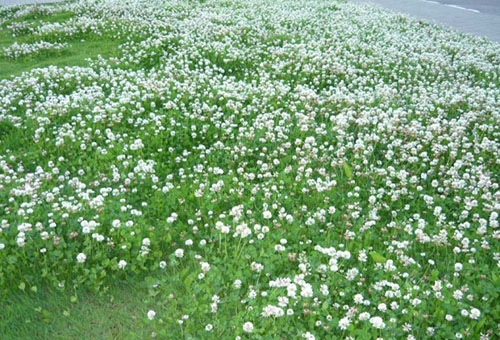
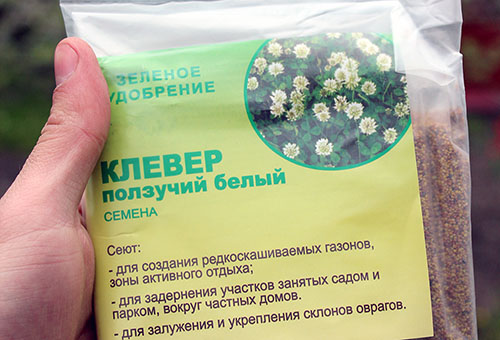
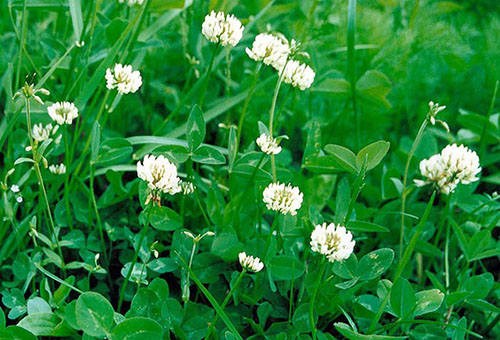
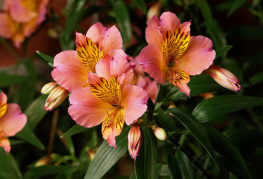
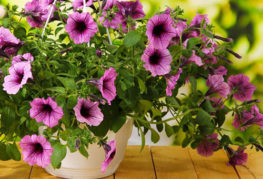
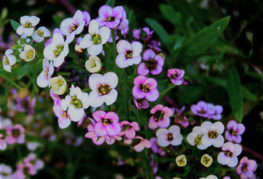


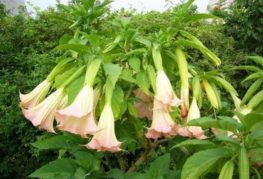
and will be published shortly.